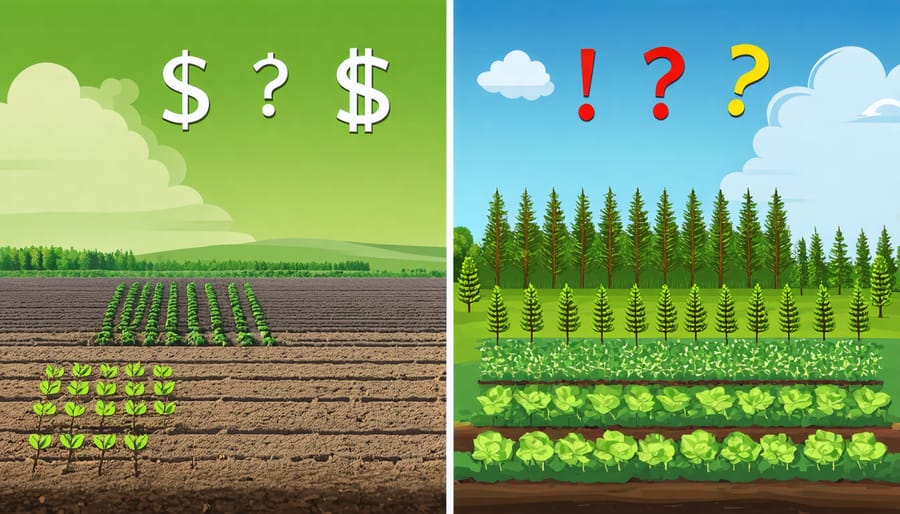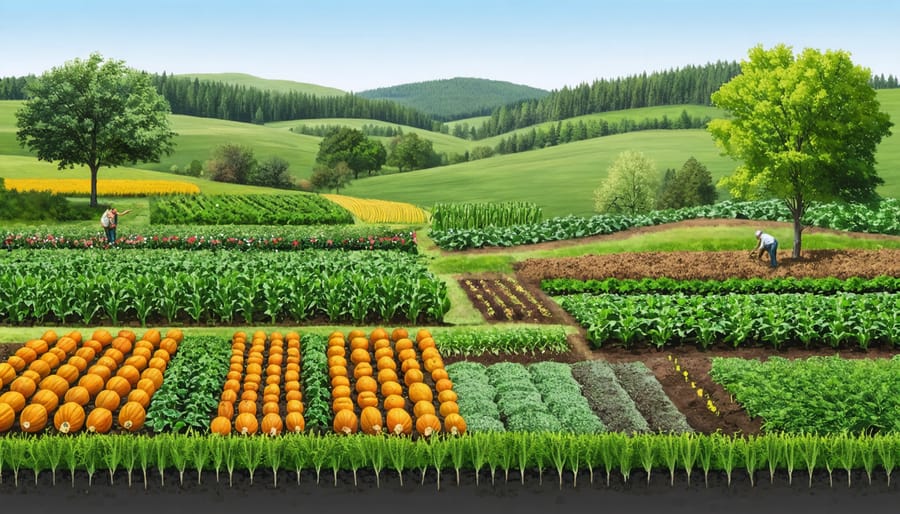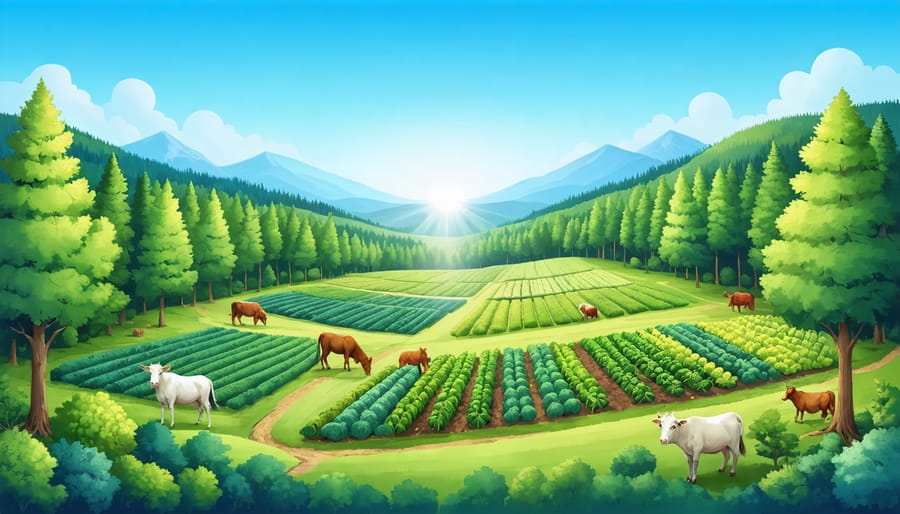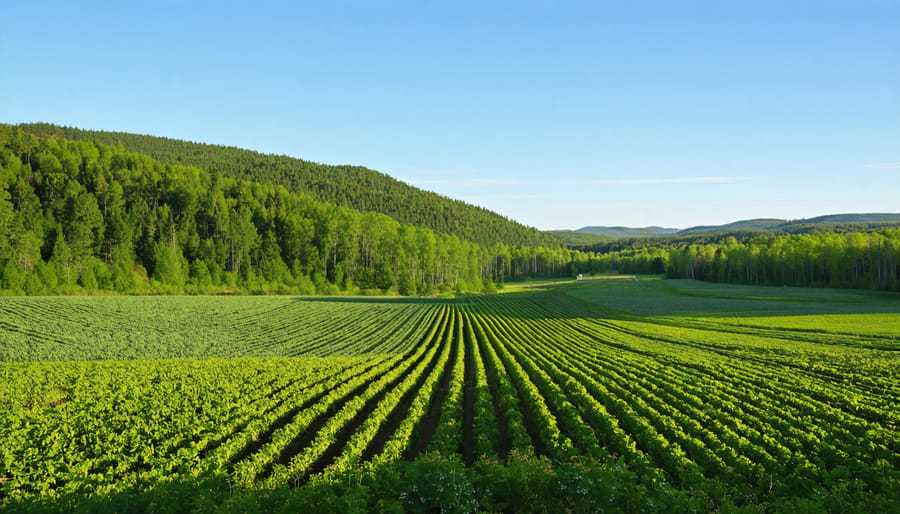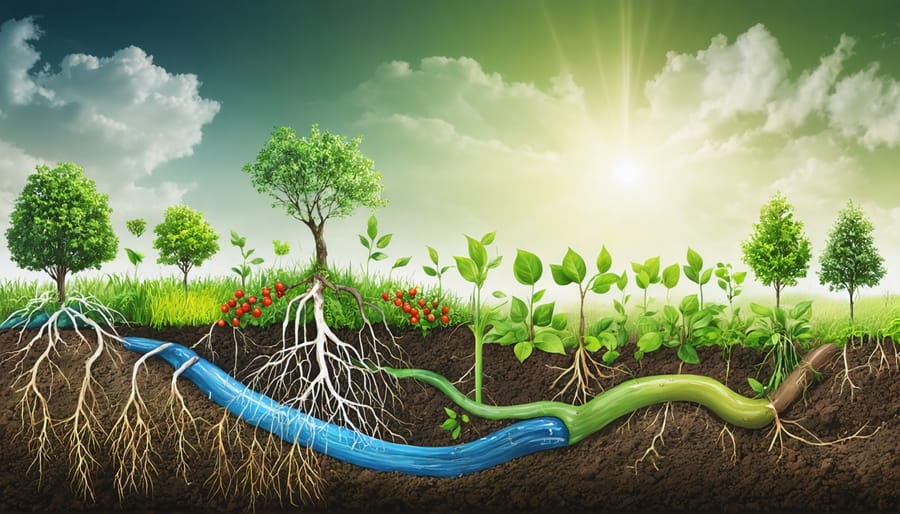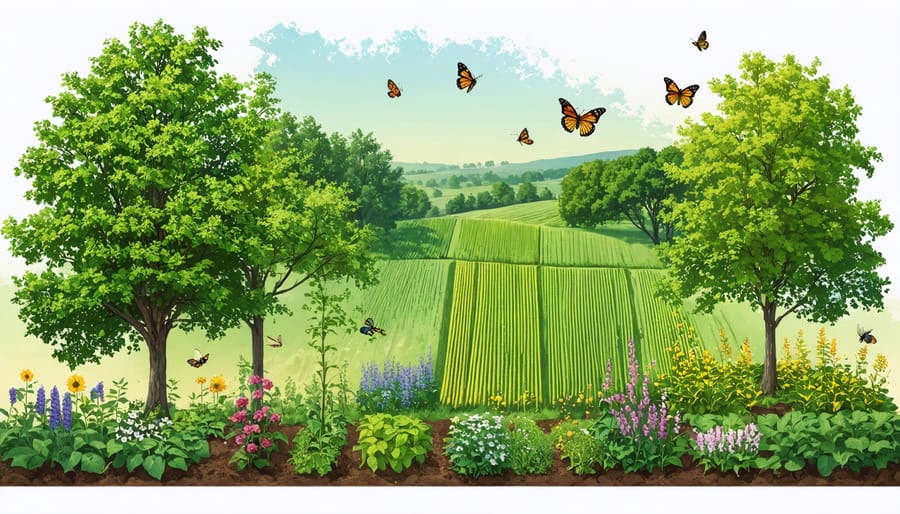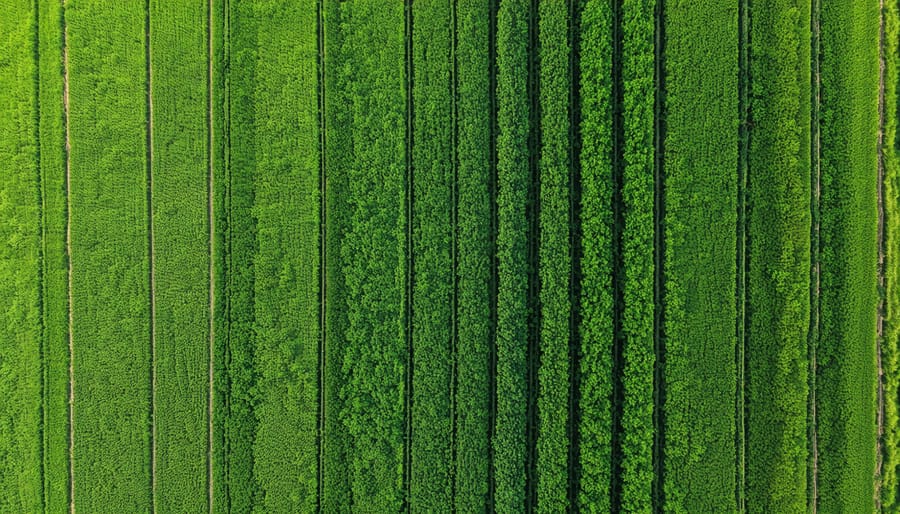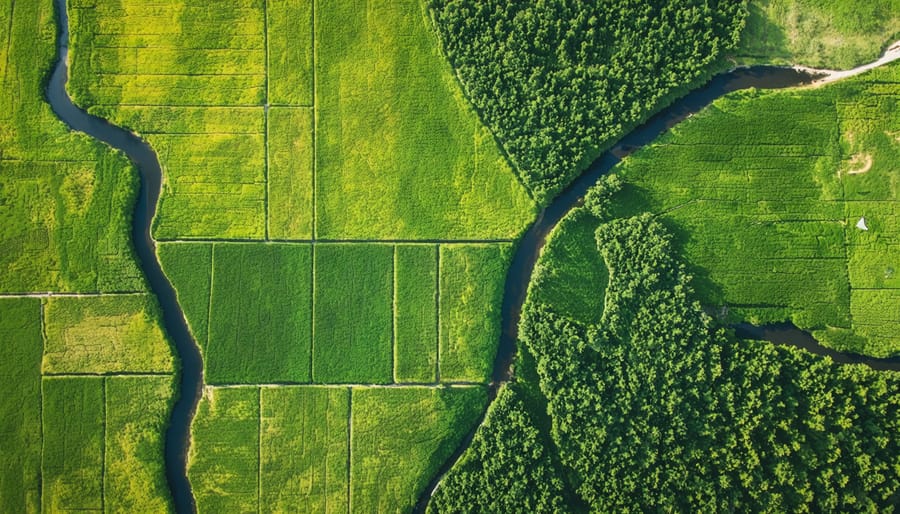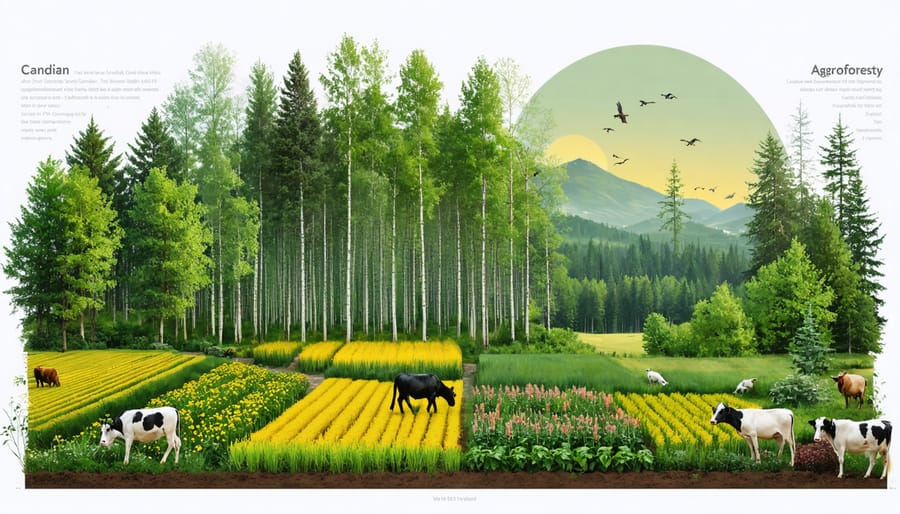While climate-resilient farming practices remain crucial for Canadian agriculture, agroforestry systems present significant challenges that farmers must carefully evaluate before implementation. The integration of trees with conventional farming operations demands substantial upfront investment, specialized knowledge, and long-term commitment that can stretch beyond a decade before reaching full productive capacity. For Alberta farmers particularly, these systems require careful consideration of land-use trade-offs, complex management decisions, and market uncertainties. Understanding these limitations becomes essential as producers weigh the benefits of diversification against practical constraints of labour, equipment modifications, and seasonal timing conflicts. This critical examination of agroforestry’s drawbacks helps agricultural professionals make informed decisions about adopting these systems within their specific operational contexts, ensuring sustainable farm management while maintaining economic viability.
Initial Investment Hurdles
Land Preparation Costs
Initial land preparation for agroforestry systems requires significant financial investment, often catching new practitioners off guard. According to recent Alberta agricultural surveys, farmers implementing agroforestry implementation strategies typically spend between $2,000 and $5,000 per hectare on basic site preparation.
These costs include essential elements such as soil testing ($150-300 per field), land clearing ($800-1,500 per hectare), and initial earthworks for water management ($1,000-2,000 per hectare). Specialized equipment rental or purchase for tree planting can add another $500-1,000 to the budget. Many Alberta farmers also need to invest in irrigation systems, which can range from $1,500 to $3,000 per hectare depending on the system’s complexity.
Additionally, soil amendments and initial fertilization programs specific to tree establishment often cost $200-400 per hectare. While these expenses can be offset through various agricultural grants and cost-sharing programs available in Canada, the initial outlay remains a significant barrier for many farmers considering the transition to agroforestry systems.
Seedling and Equipment Expenses
The initial investment in agroforestry can be substantial, particularly when it comes to purchasing tree seedlings and specialized equipment. Quality tree seedlings in Alberta typically cost between $2 to $5 each, and when establishing a system that requires hundreds or thousands of trees, these costs add up quickly. Native species like trembling aspen and white spruce, while well-adapted to our climate, often come with premium price tags.
Equipment needs can also strain the budget. Many conventional farm implements aren’t suitable for working between tree rows, necessitating specialized machinery. For instance, narrow-width tillage equipment or modified sprayers can cost 20-50% more than standard versions. Custom pruning tools, tree planting equipment, and specialized harvesting machinery may also be required, representing significant capital investments.
Storage facilities for tree products and additional fencing to protect young trees from wildlife and livestock damage add to the expense. While grants and cost-sharing programs exist through organizations like Agriculture and Agri-Food Canada, the upfront costs remain a significant barrier for many farmers considering agroforestry adoption.
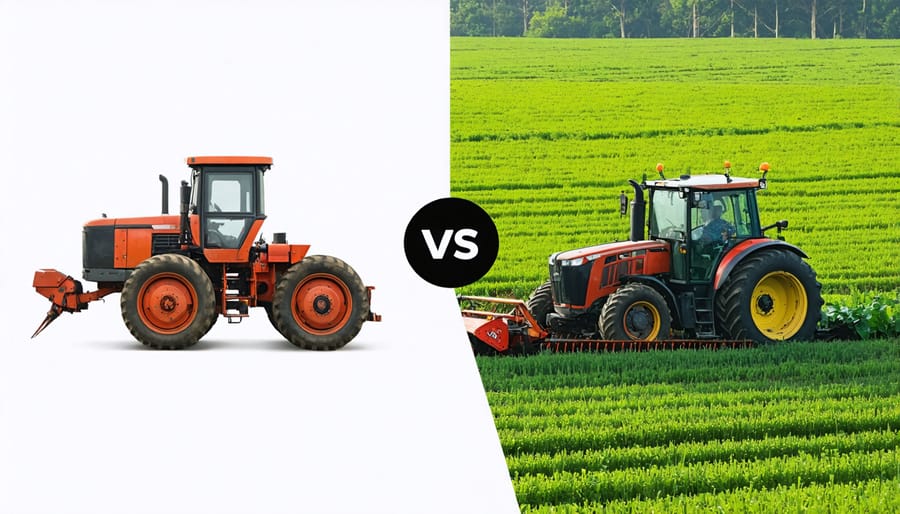
Labor and Management Complexity
Skilled Labor Shortage
Finding and maintaining skilled workers for agroforestry operations presents a significant challenge in Alberta and across Canada. Unlike conventional farming, agroforestry requires workers with specialized knowledge in both agriculture and forestry management. Workers need to understand complex ecological interactions, tree maintenance, and timing of various management activities throughout the year.
Many experienced farm workers aren’t familiar with forestry practices, while forestry workers may lack agricultural expertise. This knowledge gap often means farmers must invest considerable time and resources in training new staff. Adding to this challenge, the seasonal nature of some agroforestry tasks can make it difficult to retain workers year-round.
Based on feedback from Alberta farmers, finding workers willing to learn both skill sets while accepting rural employment can be particularly challenging. The diverse nature of tasks – from pruning trees to managing livestock and crops – requires a unique combination of physical capability and technical knowledge. Additionally, the higher initial training investment means staff turnover can significantly impact operational efficiency and costs.
Consider partnering with local agricultural colleges and forestry programs to build a skilled workforce pipeline, and explore mentorship opportunities within the farming community to share knowledge and expertise.

Complex Management Systems
Managing an agroforestry system demands significantly more attention and expertise than conventional farming practices. Unlike traditional monoculture operations, farmers must simultaneously monitor and maintain multiple agricultural components, including trees, crops, and sometimes livestock, each with distinct needs and growth cycles.
The complexity increases when considering farm ecosystem diversity and the interactions between different elements. For example, Alberta farmers need to carefully time their operations to prevent tree maintenance from interfering with crop harvesting, while also considering factors like shade patterns and root competition.
Record-keeping becomes more intricate, requiring detailed tracking of multiple harvest schedules, maintenance activities, and yield data across different system components. This complexity often necessitates additional training and specialized knowledge in both forestry and agriculture, which can be challenging to acquire in regions where agroforestry is less common.
Many Alberta producers have found that the learning curve is steep, particularly in the first few years of implementation. While management demands typically decrease as farmers gain experience, the initial complexity can be overwhelming and may require significant investment in education and professional development.
Delayed Return on Investment
One of the most significant challenges farmers face when transitioning to agroforestry is the extended waiting period before seeing substantial financial returns. Unlike traditional annual crops that generate income within a single growing season, trees and woody perennials typically require 5-15 years before reaching productive maturity.
For example, in Alberta’s climate, hybrid poplar trees take approximately 15-20 years to reach harvestable size for timber production. Fruit-bearing trees like saskatoons or sour cherries generally need 3-5 years before producing marketable yields. During this establishment period, farmers must continue investing in maintenance, protection, and care of these long-term crops while managing reduced income from the land area devoted to trees.
According to research from the University of Alberta’s agroforestry department, the initial investment in tree establishment can range from $2,000 to $5,000 per hectare, depending on species selection and planting density. This upfront cost, combined with the extended wait time for returns, can create significant cash flow challenges for farm operations.
However, experienced agroforesters suggest several strategies to bridge this gap. Many successful operations in Alberta maintain conventional farming on portions of their land while gradually transitioning other areas to agroforestry. Others incorporate fast-growing species like hybrid willows for biomass production, which can generate initial returns within 3-4 years, or integrate livestock to utilize the space between young trees for grazing.
While the delayed return on investment presents a genuine challenge, proper planning and phased implementation can help manage this transition period effectively.

Market Access Challenges
Marketing diverse agroforestry products can present significant challenges for Canadian farmers, particularly in regions like Alberta where traditional commodity crop markets are well-established. Unlike conventional farming, where established supply chains exist for major crops like wheat and canola, agroforestry products often require farmers to develop their own marketing channels.
Many farmers find that while they can successfully grow specialty products like nuts, berries, or medicinal herbs, finding reliable buyers for these items can be complicated. Local markets may become quickly saturated, especially in rural areas with smaller populations. For instance, a farmer in central Alberta reported that while their hazelnut grove produced excellent yields, they struggled to find consistent wholesale buyers within a reasonable shipping distance.
Transportation logistics pose another significant hurdle. Many agroforestry products, particularly fruits and berries, are perishable and require careful handling and quick delivery to market. This can be especially challenging in regions with longer distances between production areas and urban markets, as is common throughout Alberta.
Additionally, the seasonal nature of different agroforestry products can create market timing challenges. Unlike annual crops with single harvest periods, various products mature at different times throughout the year, requiring ongoing marketing efforts and multiple buyer relationships. This complexity increases the time and resources needed for successful market access.
Market development also requires significant investment in relationship building, quality control systems, and often certification processes for organic or sustainable production methods. While these efforts can lead to premium prices, they represent substantial upfront work before seeing returns. Farmers may need to invest in value-adding processing or storage facilities to extend their marketing window and product shelf life.
Land Tenure and Policy Issues
In Alberta, land tenure complexities present significant challenges for agroforestry implementation. Many farmers operate on leased land with traditional agricultural agreements that don’t account for long-term tree establishment. These leases typically range from 3-5 years, while trees require decades to reach maturity, creating uncertainty for farmers investing in agroforestry systems.
Current agricultural policies and insurance programs in Alberta are primarily designed for conventional farming, often leaving agroforestry practitioners with limited support. For instance, crop insurance programs may not adequately cover losses in integrated tree-crop systems, and existing agricultural subsidies rarely account for tree components in farming operations.
Property tax assessments can also pose challenges, as land with trees might be classified differently than agricultural land, potentially resulting in higher tax rates. Additionally, municipal bylaws and zoning regulations may restrict certain agroforestry practices, particularly in areas traditionally designated for single-purpose agriculture.
The Alberta Government’s Agricultural Framework doesn’t yet fully recognize agroforestry as a distinct agricultural system, which can limit access to funding programs and technical support. Local agricultural service boards are working to address these gaps, but policy changes often move slowly compared to farmers’ needs for immediate support.
While agroforestry presents significant challenges in Alberta’s agricultural landscape, these obstacles aren’t insurmountable. The key lies in approaching implementation with careful planning and community support. Initial costs and labor demands can be managed through phased adoption and by tapping into available grants and cooperative arrangements. Knowledge gaps can be bridged through mentorship programs and educational resources offered by local agricultural extension services.
Looking ahead, the development of specialized equipment and growing market demand for sustainable products are gradually making agroforestry more viable. Many Alberta farmers are finding creative solutions by sharing resources, forming producer networks, and working with agricultural experts to adapt systems to their specific conditions. With continued research, policy support, and industry collaboration, the barriers to agroforestry adoption can be effectively addressed while maintaining the economic viability of farming operations.

